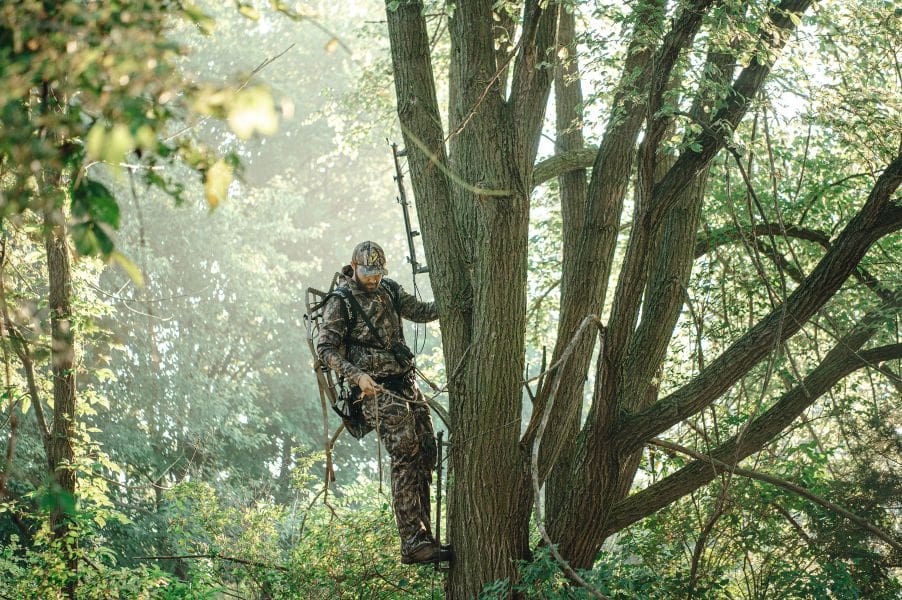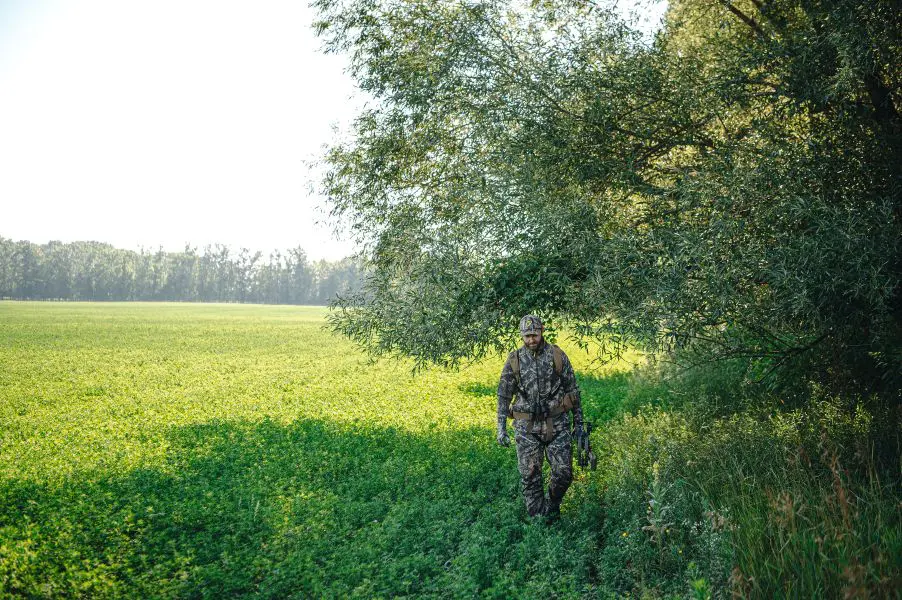Early September holds a unique charm for whitetail hunters. The days are still warm, the woods are thick with greenery, and bachelor groups of bucks often feed openly in fields, moving in and out of cover with a consistency that quickly disappears as fall progresses. For many, the draw of velvet antlers rivals the thrill of the rut. Just as the rut offers a short burst of frenzied activity that fuels buck movement, the early season, particularly those first few weeks, presents another fleeting window filled with opportunity. But tagging a velvet buck takes more than luck. Success comes from careful planning, smart strategy, and flawless execution. For many hunters, tagging a velvet buck is the ultimate early-season trophy, but in most states, such as my home state of Missouri, that opportunity never arises. Seasons often open too late, long after bucks have shed their velvet and polished their antlers on saplings and brush. In a handful of states with early openers, the window of opportunity is wide. While it may mean traveling, plenty of hunters are willing to make the trip for a shot at hunting while summer still hangs on. During this time, bachelor groups often stick to reliable feeding routines, giving hunters one of their best chances to tag a velvet-clad buck.

Scouting and Food Sources
Food is the foundation of early-season deer movement. During late summer, bucks are locked into feeding patterns, often traveling from bedding to food with surprising regularity. Scouting fields during the last hour of daylight can reveal exactly where deer enter and exit, giving hunters the best chance to set up in the right location.
Soybean fields, alfalfa stands, and thriving food plots are prime locations to glass from a distance. Spending a few evenings observing can reveal a buck’s daily rhythm and preferred travel times. Just as critical are the entry and exit trails; those faint paths often determine whether a hunter gets within range or simply watches a buck feed just out of reach.
The key to early-season scouting is low impact. Long distance glassing, using optics from a truck or a hidden vantage point, keeps pressure off and helps maintain the buck’s predictable routine until opening day. Once a predictable pattern has been established, hunters can move in during midday, hang a stand, and then hunt that evening. The same applies to saddle hunters: they slip in quietly, hang their set, hunt, then take everything down afterward so nothing is left behind for the deer to find, or if hunting public land, so no other hunter will discover your spot. Continue observing their documented travel patterns unless they change their habits or learn that you are nearby. If a change is necessary, back out, find another travel route, and keep hunting.

Trail Cameras
Scouting from a distance is an effective way to observe early-season patterns of velvet bucks. However, another highly valuable tool for tracking velvet bucks is using cellular game cameras. Once you’ve identified a food source or travel route, strategically position cameras to verify when a buck moves through. Early mornings and late evenings tend to be the most informative times, but don’t ignore midday activity near bedding cover.
Cellular trail cameras have enhanced this process by providing real-time updates without disturbing the area. Hunters can monitor patterns while leaving minimal scent and pressure, which is crucial in August and September when bucks are most vulnerable to changes in routine. Cameras also help identify multiple bucks using the same area. This intel allows hunters to set realistic expectations and adjust stand locations to take advantage of the deer that are most consistent. When you pattern a velvet buck with a specific time of arrival, arrive a couple of hours early to avoid spooking nearby deer, and stay in your saddle or tree stand until your target velvet buck shows up.
Water
When summer heat persists, water becomes just as vital as food. The truth is, not every hunter has the chance to hunt over a green or popular food source. Fortunately, water can be just as effective or even better for locating a velvet buck. Bucks often bed closer to creeks, ponds, or small waterholes to reduce stress from rising temperatures. This strategy can also benefit those who are lucky enough to hunt near food sources. Even then, sometimes you’ve patterned a buck near food but still can’t quite connect. If you’re struggling to make the connection, consider shifting your focus to water.
Natural creeks and ponds make excellent stand locations. Hunters can also create small waterholes in travel corridors or near bedding areas using tanks or specially designed systems that hold just enough water for easy deer access. A well-placed water source can pull deer out earlier in the evening or offer a shot opportunity before they reach larger food sources. The most effective setups often pair food and water, but either can work alone. For instance, a pond on the edge of a soybean field can spark steady daylight activity during the warm afternoons of early September, while a hidden water source tucked into thick cover or close to bedding areas can keep deer comfortable and moving less during hot weather.
Harvesting a velvet buck requires a disciplined approach built on observation, timing, and low-impact hunting. By scouting food sources, relying on trail cameras for real-time intel, and capitalizing on water in hot conditions, hunters can put themselves in the perfect position when the season opens. For those who dream of hanging velvet antlers on the wall, these three strategies can turn an early-season opportunity into a memory that lasts a lifetime.



